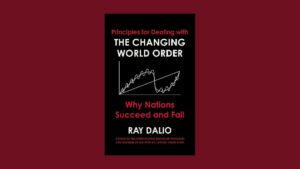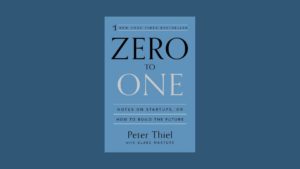Future, though modeled on, is not past.
“Once is a happenstance. Twice is a coincidence. The third time it’s enemy action,” James Bond in Goldfinger.
Just because it happened in the past doesn’t mean it will always continue to manifest in exact shape and size; or just because it hasn’t happened in the past doesn’t mean it won’t ever. In stock markets, and in life, another important element is the Time. What worked last time around the union budget or elections may not show up this next time around there is union budget or elections quite similar to what worked in the twentieth century is no guarantee it will in the twenty first. Future, though modeled on, is not a replica of the past. Rather, it is the result of the choice one makes today. Krishna in Bhagavad Gita says your future (destiny) is based on the choice (karma) you make today.
A Wall Street bromide tells investors to ‘sell in May and go away.” The rationale behind this adage is that the stock market has historically posted its best performance between the months of October and April. According to Stock Trader’s Almanac,“a $10,000 investment compounded to $578,413 for November-April period in 57 years compared to a $341 gain for May-October.” The bookies in different trades dish out many such intelligent looking maths to lure the customers.
The monetary and economic policies pursued over the past half-century hugely skewed in favour of capital, away from labour and materials (resources) because of prevailing higher interest rates. So the investors enjoyed huge returns even when capital intensive projects made a lower return on capital employed (RoCE). Contrast now, markets are giving crazy valuations to asset light companies (tech services) that are guzzling cash (making losses) in low-to-zero interest rate regime even when the old economy (asset heavy) businesses are barely able to make lower RoCE. Something surely seems out of place based on our known thinking model. Market action is telling us that such large scale drift in returns by one asset class is unlikely to sustain for a very long period. Reversal from such crazy levels, which is not a question of if but when, in any asset class are very painful.
Compared to gold, bonds and real estate, stock market returns over a 30-40 years period are showcased to convince investors to make a higher allocation for stocks. Whereas, if you reduce the period by 5-10 years from the earliest years, stock market returns don’t look that impressive. These look very amazing as you take longer and longer period. If you look at the recent 5-10 years performance, the returns may not be that rosy. Secondly, stock market returns are volatile. Every few years, there is a severe bear market pull-back of as high as 20% and more evaporating all the gains made during the previous five years. One year could produce 30-40% returns, neglible in the next three and fifth year may take away 25% putting you back where you started five years ago. Your life goals – buying a house or children’s higher education – can’t be held ransom to the volatility of stock markets.
Similarly, at the height of housing bubble ten years ago, investors were lured into real estate investments that showed phenomenal past returns. After investors take the bait, accepting hustlers’ claims on television, it is a long and painful wait till the asset prices return to even levels.
The sun always rises in the east, but at different timing each morning; tides are certain, but its timing and height are not. Too many clichés on the subject probably provoked Henry Ford to say, “History is more or less bunk.” No matter how much, or how little of it you remember, what matters is what history you make today. It is similar to the problem with forecasters, an entirely illusory set makes ninety-nine out of every hundred people on this earth believe that an orderly repetition of history allows accurate forecasting in stock markets. Order is what the human mind seeks in life, and particularly what traders pursue in stock markets. But there is none, anywhere.
We learn from history that we do not learn from it. We learn the hard way that markets do not repeat, but surprise us repeatedly. History is merely a list of surprises that come fairly regularly in unpredictable cycles. Our aim should be to learn to prepare ourselves to be surprised again, and profit from it, rather than get swamped.
























